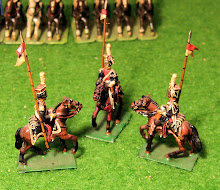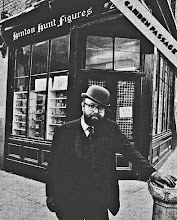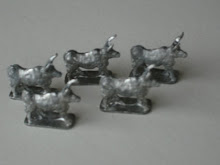The original Hinton hunt catalogue states:
We have recently celebrated the 900th Anniversary of one of the greatest events in English history - the Norman Conquest of 1066 - and Hinton Hunt Figures have commemorated this with a comprehensive range of English and Normans.
Both armies can be divided into two distinct groups. The Normans consisted of armoured and mounted knights and men-at-arms who were the elite of the Norman force, the remainder were archers on foot and mainly unarmoured.
The English elite were the Royal Bodyguard who wore armour like the Normans but, in common with all English troops, fought on foot only. Then there was the Fyrd or Militia who in the main were unarmoured and were less skilful and disciplined than the magnificent Houscarls.
Subscribe to:
Post Comments (Atom)








1 comment:
Yes Its a lovely little range. A couple of points on the history.
Norman Foot
William may well have had foot spearmen with him. Most Mediaeval armies of the period did and they are mentioned in at least one early source. They are not shown on the tapestry, but that may be because the archers play a special part in the battle.
Saxon Cavalry
This is a matter of hot debate. Guy Halsall has taken a position that the evidence hints at Saxon cavalry but does not explicitly state it. The evidence against is for levies in Herefordshire . The long kite shields shown on the Bayeux Tapestry might mean that the thegns and huscarls were mounted fighters because its a rather restrictive shield for infantry. At Brunanburh it almost says the English had mounted troops. it may just be that they are not as good at mounted warfare as the Normans or so outnumbered in that arm that they stay on the hill and bolster the fyrd rather than mount up.
Roy
Post a Comment